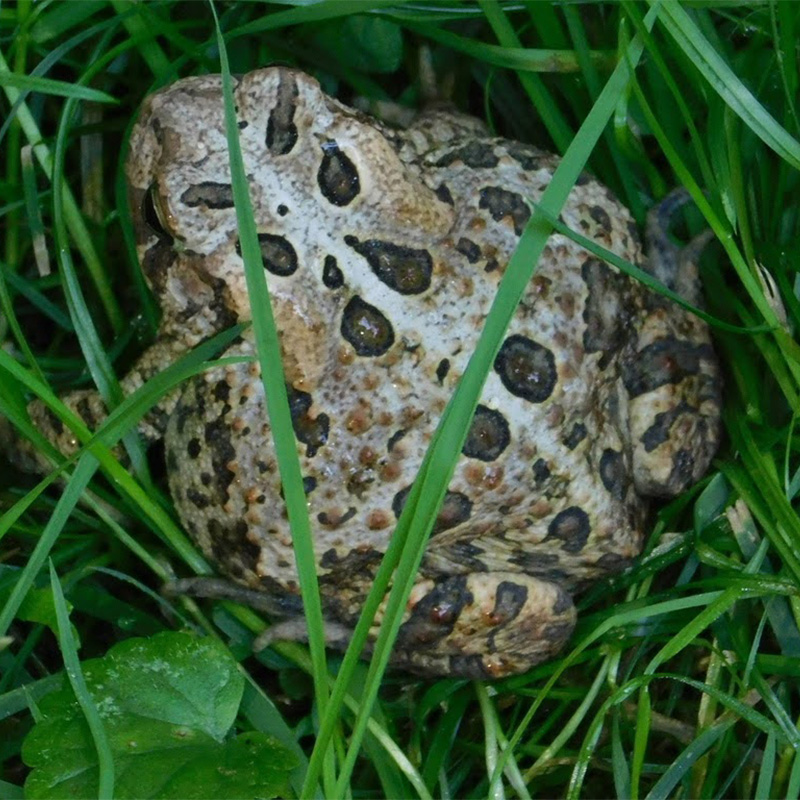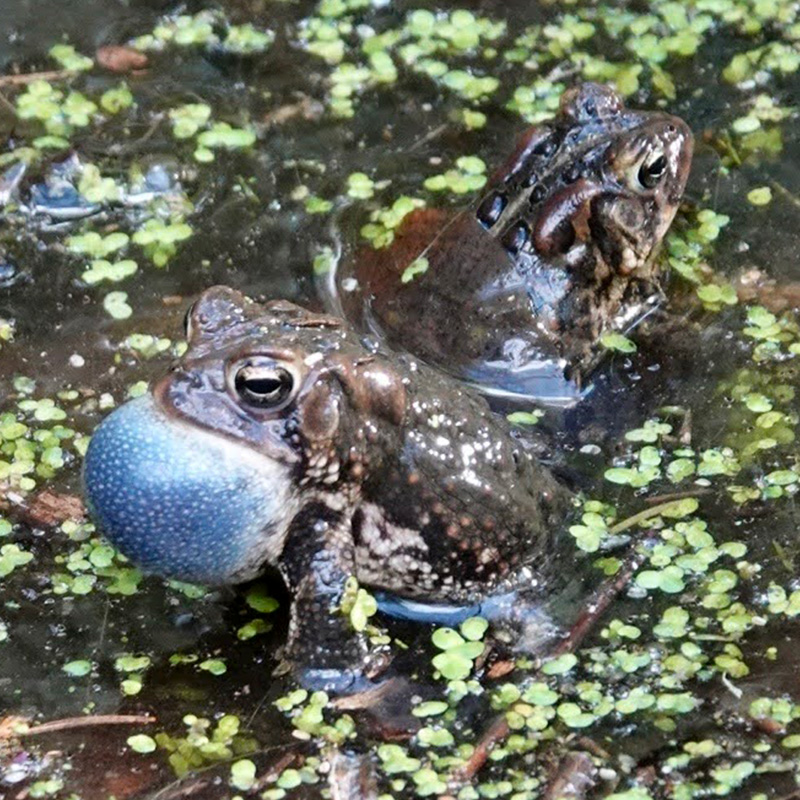American toads can eat 10,000 insects a summer, but it’s how they eat their skin that’ll amaze you

An American toad in East Somerville on July 30. (Photo: Jeanine Farley)
American toads can live almost anywhere, which explains why, on a recent urban nature walk, I spotted one in an industrial area of East Somerville. These toads require only insects to eat, some dense vegetation to hide in and a bit of water to soak in to absorb moisture. (Toads do not drink water like we do; instead, they absorb water through their skin.)
Female toads lay eggs in freshwater. Depending on the water temperature, the eggs hatch into tadpoles in a couple of days to a couple of weeks. These tadpoles have gills on the sides of their heads. For three weeks, their hind legs grow. After about a month, their front legs begin to grow and their gills disappear. Now these tadpoles breathe only air from the atmosphere. During the last few days of their metamorphosis, they reabsorb their tails. These little toadlets stay in their pond for a few days, then live mostly on land for the rest of their lives. They grow until they reach their adult size of 3 inches, shedding their skin regularly. The skin peels off in one piece, where it collects under the tongue and the toad eats it.

An American toad hides in vegetation in Watertown on July 25. (Photo: Vanessa Vallée)
American toads breed in March or April when the weather warms and days become longer. The males arrive in shallow wetlands first, to establish territories and begin calling for females. Groups of males, called choruses, puff out their throats like a balloon and make loud trilling calls that last six to 30 seconds, similar to the sound of a ringing rotary telephone (if you are old enough to remember such things). Females choose mates based on their calls and how well they defend their territories. Once a female chooses a mate, the male climbs atop the female and squeezes her abdomen. She releases two long sticky gelatinous strands that contain up to 20,000 eggs. Fertilization is external, so now the male releases sperm to fertilize the eggs. The eggs are lighter in color on the bottom and darker on the top to blend in with the background when viewed from above or below.

A male American toad puffs out its throat to make a mating call on May 14. (Photo: Michael O’Neill)
The thousands of tiny tadpoles that hatch seem like they would be easy pickings for predators, but the tadpoles have a few defenses. To hide themselves, they swim in shallow water with thick vegetation, where they eat algae and other water plants. There is also safety in numbers, so the tadpoles swim together in schools during the day. They have one final defense: They produce toxic chemicals in their skin to discourage predation. Because of this toxin, most fish learn quickly that tadpoles are not good to eat.

A baby American toad seen June 21. Toad skin color changes depending on habitat, temperature, humidity and stress. (Photo: Tom Murray)
When cold weather arrives in the fall, these toads use special hard knobs on their hind feet to dig backwards into loose soil, where they will spend the winter. How deep they dig depends upon how cold it gets. They may dig down only 6 inches or as deep as 3 feet. Unlike some frogs, American toads will die if they freeze, so they stay a couple of inches below the frost line all winter. They move up and down in the soil as the frost line changes. During the winter, the toad’s breathing slows and it lives off its stored fat. Once the soil temperature warms in the spring, toads emerge from the ground for the season.

An American toad rests in an industrial area of East Somerville on July 30. (Photo: Jeanine Farley)
Toads have two glands on their head, called parotoid glands, that secrete a milky fluid when they are startled or threatened, such as when another creature tries to eat them. This bad-tasting toxic substance causes irritation, nausea and dizziness. This poison is harmful if a predator swallows it or if it gets in the eyes, but it can make many animals very sick. Most predators immediately spit out distasteful toads and avoid preying on them in the future. (The poison is not lethal to humans, but you should wash your hands after handling a toad.)
Toads have long tongues attached to the front of their mouth. American toads move around looking for prey, unlike frogs who wait in ambush for prey. When a toad spots an insect, it moves close enough to reach it with a flick of its sticky tongue and gobbles it down.

American toads are most active when the weather is warm and humid. (Photo: Richard George)
American toads can eat 10,000 insects per summer, but have a diet that goes beyond pesky insects: Snails, slugs, gypsy moth caterpillars, beetles and earwigs are on the menu, so they are a great addition to your yard or garden. They are most active at night, and during the day hide under rocks or logs or burrow into dead leaves.
To encourage toads, plant native plants that attract insects and provide places to hide and let leaves stay on the ground. Toads also need a pool of water to soak in.

American toads have dark spots on their backs that usually contain one or two warts each. (Photo: Tom Murray)
![]()
Reader photo

Kevin Munson of Middleton, Wisconsin, sends this photo of a great blue heron at sunset.
![]()
Have you taken photos of our urban wild things? Send your images to Cambridge Day, and we may use them as part of a future feature. Include the photographer’s name and the general location where the photo was taken.
Jeanine Farley is an educational writer who has lived in the Boston area for more than 30 years. She enjoys taking photos of our urban wild things.



